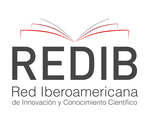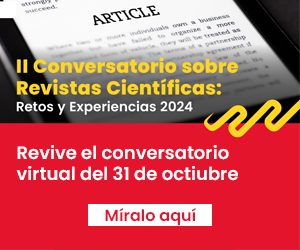Family dysfunction and anxious-depressive symptoms in inpatients of a substance use disorders rehabilitation center in Lima
DOI:
https://doi.org/10.20453/rnp.v87i2.5075Keywords:
family support, anxiety, depression, substance-related disorders, substance abuse treatment centers, PeruAbstract
Objective: To determine the relationship between family dysfunctionality and the presence of depressive/anxiety symptoms in patients hospitalized for substance use disorders. Methods: Analytical and cross-sectional study in 57 male inpatients of a substance abuse rehabilitation center in Lima. Sociodemographic and substance use information was collected; the APGAR-family, IDARE-R and IDERE-R questionnaires were applied for family dysfunctionality, anxious and depressive symptomatology, respectively. The relationship between the scores of the surveys was evaluated with the Spearman's correlation test. Results: APGAR-family scores had a non-significant inverse correlation with both the IDARE-R score (rho = -0.061; p = 0.654) and the IDERE-R score (rho = -0.084; p = 0.533). The scores obtained were 24.6 ± 7.2 for dysfunctionality, 46 ± 6.9 for depressive symptomatology, and 46.2 ± 5.4 for anxious symptomatology; it was found that 80.7% presented normal functionality, 71.9% high levels of depression, and 63.2% high levels of anxiety. The anxious symptomatology score was significantly higher in young people compared to adults; a positive correlation (Rho= 0.599, p<0.001) was found between the scores of anxious and depressive symptomatology. Conclusion: No relationship was found between anxious-depressive symptoms and the level of family dysfunctionality. A positive relationship was identified between the scores of anxious and depressive symptomatology among the members of the evaluated sample; likewise, a higher degree of anxiety among young probands was found, similar to the depression measurements but without being significant in the latter.
Downloads
References
Zumba DM. Disfuncionalidad familiar como factor determinante de las habilidades sociales en adolescentes de la Fundación Proyecto Don Bosco [Proyecto de investigación previo a la obtención de título en Internet]. Quito: Pontificia Universidad Católica del Ecuador; 2017. Disponible en: https://repositorio.puce.edu.ec/handle/123456789/7639
McKay JR, Murphy RT, Rivinus TR, Maisto SA. Family dysfunction and alcohol and drug use in adolescent psychiatric inpatients. J Am Acad Child Adolesc Psychiatry [Internet]. 1991; 30(6): 967-972. Disponible en: https://doi.org/10.1097/00004583-199111000-00015
Hidalgo CG, Santis R, Rodríguez J, Hayden V, Anselmo E. Family functioning of out-of-treatment cocaine base paste and cocaine hydrochloride users. Addict Behav [Internet]. 2008; 33(7): 866-879. Disponible en: https://doi.org/10.1016/j.addbeh.2008.02.004
Justinova Z, Panlilio LV, Goldberg SR. Drug addiction. Curr Top Behav Neurosci [Internet]. 2009; 1: 309-346. Disponible en: https://doi.org/10.1007/978-3-540-88955-7_13
United Nations, United Nations Office on Drugs and Crime. World Drug Report 2021. Booklet 1 [Internet]. Viena: UN; 2021. Disponible en: https://www.unodc.org/unodc/en/data-and-analysis/wdr-2021_booklet-1.html
Sugaya N, Haraguchi A, Ogai Y, Senoo E, Higuchi S, Umeno M, et al. Family dysfunction differentially affects alcohol and methamphetamine dependence: a view from the Addiction Severity Index in Japan. Int J Environ Res Public Health [Internet]. 2011; 8(10): 3922-3937. Disponible en: https://doi.org/10.3390/ijerph8103922
He J, Yan X, Wang R, Zhao J, Liu J, Zhou C, et al. Does childhood adversity lead to drug addiction in adulthood? A study of serial mediators based on resilience and depression. Front Psychiatry [Internet]. 2022; 13: 871459. Disponible en: https://doi.org/10.3389/fpsyt.2022.871459
Collin C. Substance abuse issues and public policy in Canada: I. Canada's Federal Drug Strategy [Internet]. Ottawa: Library of Parliament (CA); 2006. Disponible en: https://publications.gc.ca/collections/Collection-R/LoPBdP/PRB-e/PRB0615-e.pdf
Contreras Y, Mirandaz O, Torres V. Ansiedad y depresión en pacientes adictos a sustancias psicoactivas. Rev Cuba Med Mil [Internet]. 2020; 49(1): e492 Disponible en: https://revmedmilitar.sld.cu/index.php/mil/article/view/492
Langås AM, Malt UF, Opjordsmoen S. Independent versus substance-induced major depressive disorders in first-admission patients with substance use disorders: an exploratory study. J Affect Disord [Internet]. 2013; 144(3): 279-283. Disponible en: https://doi.org/10.1016/j.jad.2012.10.008
Comisión Nacional para el Desarrollo y Vida sin Drogas. I Estudio sobre prevención y consumo de drogas en la población general de Lima Metropolitana y el Callao - 2013 [Internet]. Lima: DEVIDA; 2014. Disponible en: https://www.gob.pe/institucion/devida/informes-publicaciones/3057350-i-estudio-sobre-prevencion-y-consumo-de-drogas-en-la-poblacion-general-de-lima-metropolitana-y-el-callao-2013
Suárez MA, Alcalá M. Apgar familiar: una herramienta para detectar disfunción familiar. Rev Méd La Paz [Internet]. 2014; 20(1): 53-57. Disponible en: http://www.scielo.org.bo/pdf/rmcmlp/v20n1/v20n1_a10.pdf
Spielberger CD, Díaz-Guerrero R. Inventario de Ansiedad: Rasgo-Estado. Ciudad de México: Manual Moderno; 2008.
Martín M, Grau R, Grau JA. El Inventario de Depresión Rasgo-Estado (IDERE): desarrollo de una versión cubana. Ter Psicológica [Internet]. 2003; 21(2): 121-135. Disponible en: https://www.researchgate.net/publication/260079438_El_inventario_de_depresion_rasgo-estado_IDERE_Desarrollo_de_una_version_cubana
Anicama G, Pizarro A, Pineda L, Vallenas P, Aguirre M, Villanueva B. Evidencias psicométricas del inventario ansiedad estado-rasgo: IDARE en universitarios de Lima en tiempos de COVID-19 . Psychologia. Avances de la Disciplina [Internet]. 2021; 15(2): 49-62. Disponible en: https://doi.org/10.21500/19002386.5911
Asillo EY. Relación entre la funcionalidad familiar y la depresión en adolescentes de un centro preuniversitario [tesis de licenciatura en Internet]. Arequipa: Universidad Católica de Santa María; 2020. Disponible en: https://repositorio.ucsm.edu.pe/handle/20.500.12920/10089
Bellón JA, Delgado A, Luna JD, Lardelli P. Validez y fiabilidad del Cuestionario de Función Familiar Apgar-familiar. Atención Primaria [Internet]. 1996; 18(6): 289-296. Disponible en: https://www.elsevier.es/es-revista-atencion-primaria-27-articulo-validez-fiabilidad-del-cuestionario-funcion-14357
Cuba M, Jurado A, Romero Z, Cuba M. Características familiares asociadas a la percepción de la calidad de vida en pobladores de un área urbano-marginal en el distrito de Los Olivos, Lima. Rev Méd Hered [Internet]. 2013; 24(1): 12-16. Disponible en: https://doi.org/10.20453/rmh.v24i1.728
Merchán-Hamann E, Leal EM, Basso L, García M, Reid P, Kulakova OV, et al. Comorbilidad entre abuso/dependencia de drogas y el distrés psicológico en siete países de Latinoamérica y uno del Caribe. Texto Context Enferm [Internet]. 2012; 21: 87-95. Disponible en: https://doi.org/10.1590/S0104-07072012000500012
Díaz D. Depresión, ansiedad y funcionalidad familiar en estudiantes de Medicina en una universidad nacional peruana [tesis de doctorado en Internet]. Lima: Universidad César Vallejo; 2021. Disponible en: https://hdl.handle.net/20.500.12692/79801
Sari DM, Fatah MZ, Nurmala I. Family’s role in helping drug abuser recovery process. J PROMKES [Internet]. 2021; 9(1): 59-68. Disponible en: https://doi.org/10.20473/jpk.V9.I1.2021.59-68
Grimm P. Social desirability bias [Internet]. En Sheth JN, Malhotra NK, editores. Wiley International Encyclopedia of Marketing [Internet]. Nueva Jersey: John Wiley & Sons; 2010. Disponible en: https://web.archive.org/web/20240422032818/https://oj8k.gitee.io/knowledge_management/files/readings/sdb_intro.pdf
Gibson D, Wermuth L, Sorensen JL, Menicucci L, Bernal G. Approval need in self-reports of addicts and family members. Int J Addict [Internet]. 1987; 22(9): 895-903. Disponible en: https://doi.org/10.3109/10826088709027468
Pinheiro R, Pinheiro KA, Magalhães P, Horta B, da Silva R, Sousa PL, et al. Cocaine addiction and family dysfunction: a case-control study in southern Brazil. Subst Use Misuse [Internet]. 2006; 41(3): 307-316. Disponible en: https://doi.org/10.1080/10826080500409167
Gyawali B, Choulagai BP, Paneru DP, Ahmad M, Leppin A, Kallestrup P. Prevalence and correlates of psychological distress symptoms among patients with substance use disorders in drug rehabilitation centers in urban Nepal: a cross-sectional study. BMC Psychiatry [Internet]. 2016; 16(1): 314. Disponible en: https://doi.org/10.1186/s12888-016-1003-6
Arrieta K, Díaz S, González F. Síntomas de depresión, ansiedad y estrés en estudiantes de Odontología: prevalencia y factores relacionados. Rev Colomb Psiquiatr [Internet]. 2013; 42(2): 173-181. Disponible en: https://doi.org/10.1016/S0034-7450(13)70004-0
Spielberger C, Buela-Casal G, Agudelo D, Carretero-Dios H, Santolaya F. Analysis of convergent and discriminant validity of the Spanish experimental version of the State-Trait Depression Questionnaire (ST-DEP). Actas Esp Psiquiatr [Internet]. 2005; 33(6): 374-382. Disponible en: https://europepmc.org/article/med/16292721
Mohamed II, Ahmad HE, Hassaan SH, Hassan SM. Assessment of anxiety and depression among substance use disorder patients: a case-control study. Middle East Curr Psychiatry [Internet]. 2020; 27(1): 22. Disponible en: https://doi.org/10.1186/s43045-020-00029-w
Kalin NH. The critical relationship between anxiety and depression. Am J Psychiatry [Internet]. 2020; 177(5): 365-367. Disponible en: https://doi.org/10.1176/appi.ajp.2020.20030305
Daigre C, Perea-Ortueta M, Berenguer M, Esculies O, Sorribes-Puertas M, Palma-Alvarez R, et al. Psychiatric factors affecting recovery after a long term treatment program for substance use disorder. Psychiatry Res [Internet]. 2019; 276: 283-289. Disponible en: https://doi.org/10.1016/j.psychres.2019.05.026
Méndez-Díaz M, Romero BM, Cortés J, Ruíz-Contreras AE, Prospéro-García O. Neurobiología de las adicciones. Rev Fac Med [Internet]. 2017; 60(1): 6-16. Disponible en: https://www.scielo.org.mx/pdf/facmed/v60n1/2448-4865-facmed-60-01-6.pdf
Poudel A, Sharma C, Gautam S, Poudel A. Psychosocial problems among individuals with substance use disorders in drug rehabilitation centers, Nepal. Subst Abuse Treat Prev Policy [Internet]. 2016; 11(1): 28. Disponible en: https://doi.org/10.1186/s13011-016-0072-3
Denning P. Harm reduction therapy with families and friends of people with drug problems. J Clin Psychol [Internet]. 2010; 66(2): 164-174. Disponible en: https://doi.org/10.1002/jclp.20671
Storebø OJ, Simonsen E. The association between ADHD and Antisocial Personality Disorder (ASPD): a review. J Atten Disord [Internet]. 2016; 20(10): 815-824. Disponible en: https://doi.org/10.1177/1087054713512150
Schellekens AF, van den Brink W, Kiefer F, Goudriaan AE. Often overlooked and ignored, but do not underestimate its relevance: ADHD in addiction - addiction in ADHD. Eur Addict Res [Internet]. 2020; 26(4-5): 169-172. Disponible en: https://doi.org/10.1159/000509267
Kessler FH, Terra M, Faller S, Stolf A, Peuker AC, Benzano D, et al. Crack users show high rates of antisocial personality disorder, engagement in illegal activities and other psychosocial problems. Am J Addict [Internet]. 2012; 21(4): 370-380. Disponible en: https://doi.org/10.1111/j.1521-0391.2012.00245.x
Bonfiglio NS, Portoghese I, Renati R, Mascia ML, Penna MP. Polysubstance use patterns among outpatients undergoing substance use disorder treatment: a latent class analysis. Int J Environ Res Public Health [Internet]. 2022; 19(24): 16759. Disponible en: https://doi.org/10.3390/ijerph192416759
Krawczyk N, Feder KA, Saloner B, Crum RM, Kealhofer M, Mojtabai R. The association of psychiatric comorbidity with treatment completion among clients admitted to substance use treatment programs in a U.S. national sample. Drug Alcohol Depend [Internet]. 2017; 175: 157-163. Disponible en: https://doi.org/10.1016/j.drugalcdep.2017.02.006
Castro R. Consumo de drogas en el Perú. Debate Agrar [Internet]. 2005; 39: 127-154. Disponible en: https://cepes.org.pe/wp-content/uploads/2019/03/05-mata.pdf
Molina-Quiñones HJ, Salazar-Taquiri V. Factores asociados al consumo de alcohol en adolescentes residentes en Lima, Perú. Rev Habanera Ciencias Médicas [Internet]. 2022; 21(3): e4655. Disponible en: https://revhabanera.sld.cu/index.php/rhab/article/view/4655
Downloads
Published
How to Cite
Issue
Section
License
Copyright (c) 2024 Rafael Alarco Herrera, sr, Kildery Bruno Araujo Silva, Luis Felipe Rojas Cama

This work is licensed under a Creative Commons Attribution-NonCommercial 4.0 International License.















 RNP is distributed under a
RNP is distributed under a 